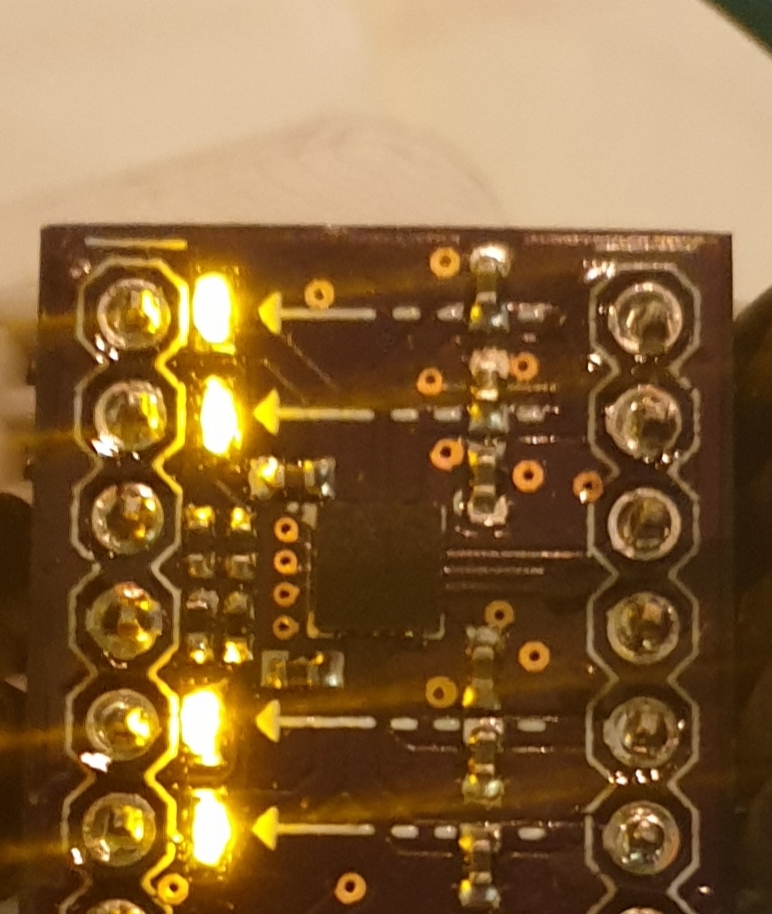Other Parts Discussed in Thread: TPS22917, TPS22924
Hi,
I created my own breakout for TPS22994 a while back and wrote a simply library for it.
In an evaulation for a IOT device I'm using quite a powerhungry wireless module drawing way too much current in sleep mode.
The wireless device is known to have spikes up to 2amp (few ms) and then staying in the range of 30-60 during active mode.
Since I'm breadboarding I needed a way to control power-on to the wireless module so I placed my TPS22994 breakout board.
Placed my LiPO single cell on the inputs of all of them (4) by bridging them together. Connected all four outputs to the wireless module.
Then run the SwitchALL command. The 2amp spikes are known to come after a few seconds. On the wireless module there is a 100uF oversized cap.
Though it would be ample time to get that charge to handle the spikes by its-self.
The wireless module behaves badly and wont work when behind the TPS22994. If I act as the switch by connecting the wireless module manually to the lipo instead of the TPS22994 it works as expected.
The TPS22994 should handle 1amp per channel but I guess there is something in the details I'm missing.
Off course I wont use the TPS22994 in my design but opt for a single channel load switch like TPS27081A or maybe smaller formfactor TPS22916.
But I would really like to understand whats happening here.
I think it could be related to my Slewrate or Quick Output Discharge (QOD) Control settings.


